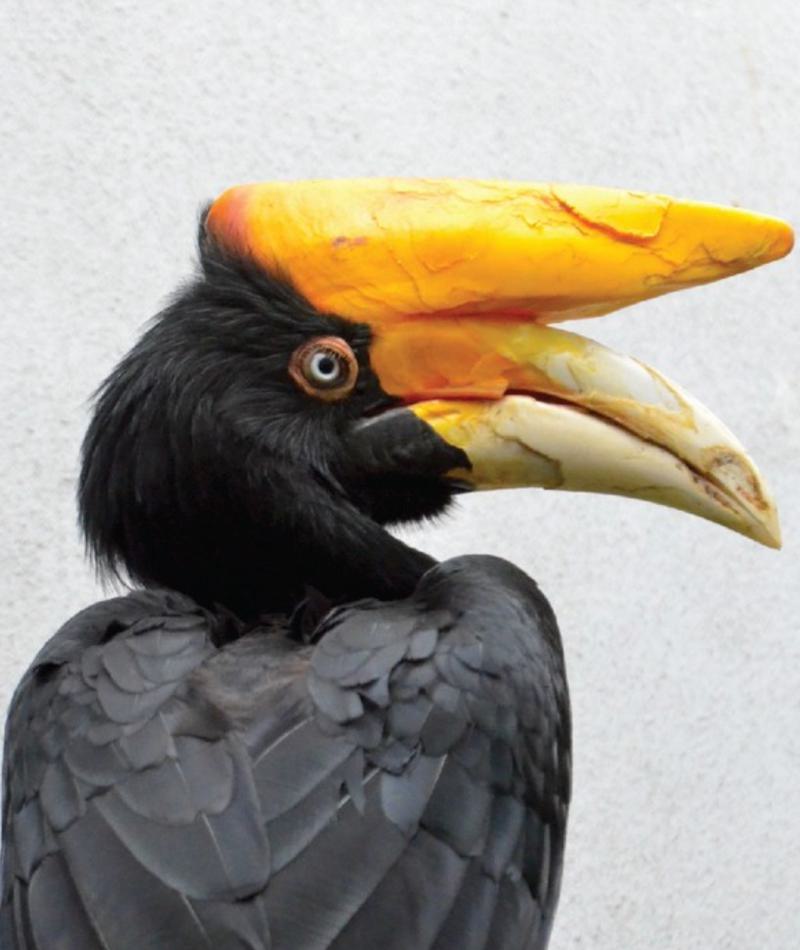
Rhinoceros Hornbill
Buceros rhinoceros silvestris
Did you know?
- Rhinoceros hornbills are part of the Bucerotidae family, which they share with other hornbills.
- They usually live in pairs, but sometimes groups will come together in a tree to eat.
- They make their nests in large tree trunks.
- Both parents feed their chick until it is around 80 days old.
- In 2013, for the first time, a rhinoceros hornbill chick hatched at the Saint Louis Zoo.
Wow! That's Loud!
Rhinoceros hornbills' golden-yellow horn (casque) is thought to act as an amplifier to communicate with each other in their forest habitat.
Young and Family
When a female lays her egg, she seals herself in a log and incubates the egg, relying solely on the male to pass her food through a tiny hole.
Threat Level
- Unknown
- Common
- Near Threatened
- Threatened
- Endangered
- Critically Endangered
- Extinct in the Wild
Common
The Rhinoceros Hornbill faces a high risk of extinction in the wild.
Range
Southeastern Asia
Habitat
Forests

We care about rhinoceros hornbills
The Saint Louis Zoo supports rhinoceros hornbills at the Bird House and Bird Garden.
Find this animal in Historic Hill

SAINT LOUIS ZOO ZONE
Historic Hill
Historic Hill is a lovely stroll through one of the oldest parts of the Saint Louis Zoo. From the 1904 World’s Fair Flight Cage to the Spanish architectural flavor of the 1920s in the Bird House, Primate House and Herpetarium to the finishing touches of our thoroughly modern exhibits, this area of the Zoo has a unique ambiance and a nostalgic history that make it a great destination.

